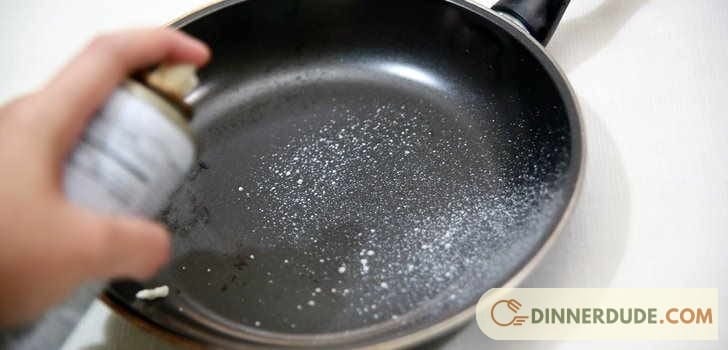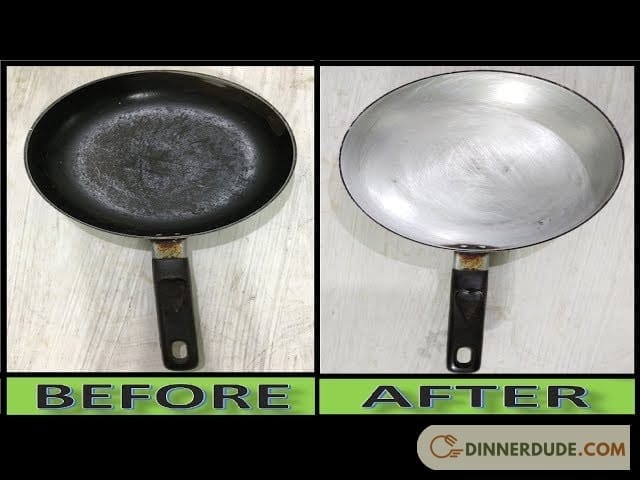How to remove nonstick coating from cookware? Nonstick cookware, while convenient and easy to use, can over time lose its nonstick properties due to wear and tear. When this happens, food starts sticking to the pan, making cooking and cleaning a hassle.
Moreover, damaged nonstick coating can potentially release harmful substances into your food. Therefore, it becomes necessary to remove the old nonstick coating before reapplying a new one or opting for a different type of cookware surface. Dinnerdude will answer your questions through the article below
Understanding the Need for Nonstick Coating Removal

Identifying the Right Time for Nonstick Coating Removal
Before we delve into the process of removing the nonstick coating, it’s important to know when it’s the right time to do so. Signs that your nonstick coating needs removal include visible scratches or peeling, difficulty in cleaning the cookware, and food starting to stick to the surface.
If you notice any of these signs, it’s time to consider removing the nonstick coating.
Safety Precautions Before Starting the Process
Safety should always be the first priority when undertaking such a task. Ensure you’re wearing protective gear, including gloves and safety glasses, to protect yourself from any potential harm.
Also, make sure to work in a well-ventilated area to avoid inhaling any harmful fumes.
How to remove nonstick coating from cookware?

The Removal Process
The process of removing nonstick coating involves several steps. First, fill your cookware with water and add about half a cup of baking soda. Boil this mixture for about 15 minutes. The heat and the baking soda will help loosen the nonstick coating.
After boiling, let the cookware cool down. Then, using a wooden spatula or a plastic scraper, gently scrape off the nonstick coating. Be careful not to use metal utensils as they can scratch and damage the underlying surface of the cookware.
For stubborn spots, you may need to repeat the process or use a non-abrasive scrubbing pad. Remember, the goal is to remove the nonstick coating without damaging the cookware itself.
Post-Removal Cleaning and Maintenance
Once the nonstick coating is completely removed, clean the cookware thoroughly with warm soapy water to remove any residual coating particles. Dry it properly before storing to prevent rusting.
If you plan to reapply a new nonstick coating, ensure the cookware surface is completely clean and dry. If not, consider using your cookware without a nonstick surface, but remember to season it regularly to prevent food from sticking.
Other non-stick coating removal methods
I discovered many techniques for removing the coating from your cookware. If you decide to replace all of your cookware, make sure you pick the proper product for your kitchen. For example, selecting the finest wok for a glass top stove is critical.
It is now time to investigate the numerous methods to remove the old nonstick coating from a work.
- Remove the non-stick coating with dishwashing liquid, hot water and a scouring pad
- Soak the cookware to remove the non-stick coating
- Use a metal scrubber to remove the non-stick layer
- Use baking soda
- Using abrasive sandblasting method with aluminum oxide explosive material
- Use high temperature
- Use sandpaper
- Using an angle grinder
- Sanding with aluminum oxide
- Use walnut shells

In conclusion, removing the nonstick coating from the cookware is a task that requires patience and care. By following these steps, you can give your old cookware a new lease on life, ensuring many more years of enjoyable cooking.